Research comes out every day with conflicting information on how to train, eat, and rest. Should you give up alcohol? Red meat? Or (God forbid) caffeine? Sleep more or less?
Get the Skinny on Fat
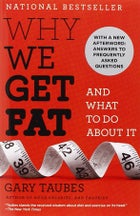 Common tropes about fat, both the state of being and the macronutrient, don't gel with our real fuel requirements.
Common tropes about fat, both the state of being and the macronutrient, don't gel with our real fuel requirements.Make Peace with Yoga
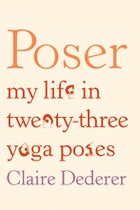 Lessons learned on the mat are applicable in many places other than yoga class.
Lessons learned on the mat are applicable in many places other than yoga class.Make Money Matter Less
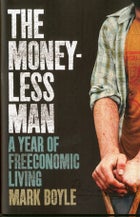 Boyle says a moneyless life can improve mental and physical health by giving you a true sense of community.
Boyle says a moneyless life can improve mental and physical health by giving you a true sense of community.Ěý
To find answers, we put seven şÚÁĎłÔąĎÍř editors through a range of 30-day self-denial sufferfests:
- Editor Christopher Keyes abandoned solid food for a detoxing cleanse.
- Contributing Editor Abe Streep risked losing his mind by giving up coffee.Ěý
- Editor Will Palmer boldly kept his office door open and learned to be more social.
- Online Editor Joe Spring got paid to take frequent naps, and only felt a little guilty about it.
- Writer Gretchen Reynolds saw life from a new perspective after ditching her office chair.
- Editorial Assistant Ryan Krogh got sweat all over his living room after embracing a new workout regimen.
- Executive EditorĚýSam Moulton gambled losing friends but gaining peace of mind by never telling a lie.
The results yielded surprising answers about what you need for total health. Let their pain be your guide.
Detox!
Hypothesis: A cleanse will rid your body of toxins and boost your mood and energy
Time Commitment: 28 Days
Researcher: Christopher Keyes
One morning last January, I arrived at our weekly editorial meeting to discover that three colleagues had been seduced by a nutritional cult. “Have you tried the green smoothie?” I heard one of them exclaim. “It's amazing!” They were all following a 21-day cleanse outlined by New York cardiologist in his . Their enthusiasm, combined with the few aspects of the program I gleaned from their constant hallway banter—, liquid meals—triggered my knee-jerk disdain for fad diets and New Year's resolutions. I started to refer to them as the Clean People.
Then one day, I asked the cult leader a few questions. She was three weeks in and had an undeniable glow. “I feel like I have the energy of a high schooler,” she said. Damn. At 36, I'm a healthy guy who works out six days a week and eats plenty of veggies. But with two kids, a stressful job, and a chronic dependence on dessert and an evening glass of wine, I wake up every morning with a mild lower-back ache and can't even carry on a conversation with my two-year-old before I've had two cups of coffee. High school sounded a lot better. I purchased a copy of Clean.
As it turns out, my initial skepticism about cleanses wasn't completely off-base. For as long as they've been popular, cleanses have been derided by much of the medical establishment. Nutritionists warn that many are too low in calories to be considered a healthy lifestyle choice; some are even dangerous. Junger's program, however, is a lot saner. In the first few chapters of Clean, he unveils his thesis: We are a nation of bad eaters living in a chemical wonderland, and our bodies are inundated with toxins—pesticides, processed foods, medications, household cleaners, you name it. What's more, our microwaveable Western diet and workaholic lifestyles have compromised our bodies' natural detox systems. We eat foods that are hard to digest (wheat, nightshade vegetables, and dairy, among others) or that exhaust our intestinal flora, immune system, and adrenal glands (sugar, caffeine, and alcohol).
As a result, concludes Junger, most Americans are carrying toxins around like excess baggage, leading to inflammation—believed to be one of the leading causes of heart disease and cancer—and many other side effects, such as bad skin, low energy, thyroid problems, and depression. “Imagine you buy two plants and put them on the same windowsill,” says Junger. “One of them you feed only water. The other you give coffee one day, maybe a little vodka the next—whatever you feel like. You know what will happen?”
Junger is a skilled evangelist. By the time he's made his case, even someone who thinks of himself as nominally healthy is ready to come to Jesus. Then he drops the hammer: for three weeks, he wants you to eliminate a host of foods from your diet and consume a liquid meal for breakfast and dinner (smoothies, juices, or soups; he provides all the recipes). Then, every night, allow 12 hours between dinner and breakfast, giving your body time to completely digest your food and begin the long-neglected business of shedding toxins. The sane part I alluded to? You can have a Junger-approved list of solid foods for lunch—including organic chicken, fish, and lamb—and regular snacks during the day (raw cashews, blueberries). It sounded easy.
In theory. A few days before I started, my wife read aloud from the “no” column. “No cheese, no wheat, no refined sugar, no coffee, no alcohol,” she said, pausing to look at me after the last two. (She'd just had a baby, and was in no mood for continued deprivation.) She kept reading, but I tuned out, wondering instead where I'd stash some emergency bourbon and chocolate.
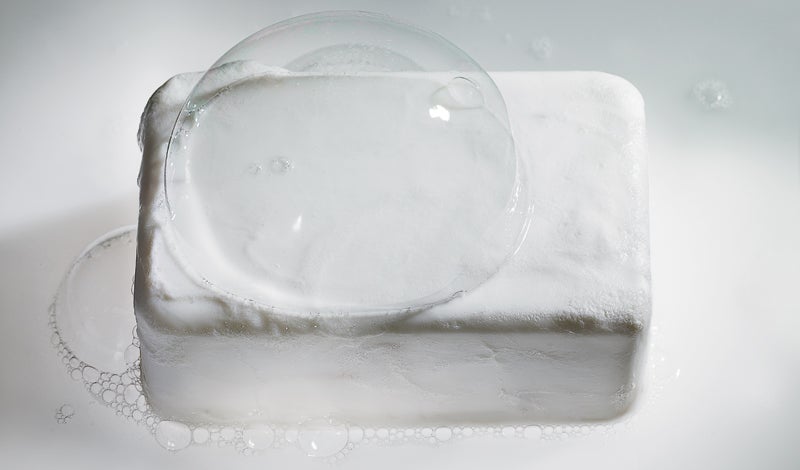
Week 1: Time to Eliminate
- Metrics: (each week I measured my 5-foot-7 frame using a Tanita body-composition scale): 146 lbs, 15.1% body fat, 1625 basal metabolic rate, 22 metabolic age
- The Plan: This is the optional pre-cleanse week. I still eat three solid meals, but eliminate foods on Junger's “no” list.
- Day One: My abruptly decaffeinated mind is a liability to my staff. I pad down office hallways with my head down and a distinct edge about me. A colleague drops by with an otherwise routine request. I snap at her. “You started the cleanse today, didn't you?” she says cheerily, laughing off my crankiness.
- Home: No sanctuary, either. Forgoing a glass of wine and ice cream after dinner is agony. Hunger gnaws at my stomach. In Clean, Junger explains that much of what we now recognize as hunger is an emotional state, not a physical reality. We eat to fill voids caused by boredom, sadness, or stress. I'd like to strangle Alejandro Junger. But there is a flip side. A few days in, I start to wake up feeling…awake. My achy lower back, which I'd always attributed to tight hamstrings from too much running, has disappeared. I'd like to hug Alejandro Junger.
Week 2: The Real Work Begins
- Metrics: 141 lbs, 14.8% body fat, 1575 BMR, 21 metabolic age
- The Plan: Liquid breakfasts and dinners, solid foods only at lunch and snack time.
- Day One: For the first time in 30 years, instead of pouring equal parts sugar-glazed raisin bran and milk into a giant bowl, I pour a blenderful of blueberries, almond milk, cacao, and agave syrup into a glass. I down it. I'm still hungry, but ride it out. After a post-breakfast run, I feel satisfied—and infinitely sharper. The same feeling emerges after my first liquid dinner. It's still hard to watch my wife sip a glass of wine or eat a giant oatmeal cookie, but my old food cravings begin to subside and are replaced with surprising new ones.
- Midweek: My wife and I go out to dinner at a restaurant that specializes in salads. (I wasn't cheating; in recognition of the turbulence of real life, Junger allows you to occasionally stray from a liquid dinner if you replace it the same day with a liquid lunch.) I used to hate this place. Last time, I destroyed any semblance of a healthy salad under a bacon dressing and a fatty skirt steak. This time, when the waitress brings my seared tuna over salad greens, it looks like the most delicious food I've ever seen. I ask them to hold the red peppers and corn (two no's on Junger's list). Who am I?
- Full Disclosure: I fall off the wagon on day 13, when a friend and I take our daughters camping. I diligently bring along a Clean-prescribed smoothie for dinner, but then said friend shoots me a what-the-hell-is-that look and cracks open a beer. By the end of the night, I've had three. I later call Junger to find out what kind of damage I've done. “Well,” he says, sounding a little disappointed, “when you're cleaning your house, you don't stop to throw a bunch of lard around. But if it was only one night, it's no big deal.”
Week 3: Getting Juiced
- Metrics: 138 lbs, 14.3% body fat, 1525 BMR, 18 metabolic age
- The Plan: Same as last week, but now I'm mixing in some Clean boosters: an omega-3 and a probiotic with breakfast, five minutes of meditation each night, and two tablespoons of olive oil before bed to help move food through my intestines.
- Tuesday Morning: I'm admiring my new physique in the mirror. My wife walks in. “You look like a 12-year-old,” she says. She's just being honest. Seventeen days in, my neck is scrawny-looking (and my metabolic age has dropped to 18). I've lost eight pounds. I start doing more push-ups. My days now seem Paleolithic, entirely consumed with gathering, cooking, and taking in calories. I take a trip to the office kitchen every morning, and instead of coffee, I fill up my Brita filter and drop a lemon in my water bottle. I savor my 10 a.m. snack of organic raw cashews. My solid-food lunches—lamb chops, organic chicken, grilled halibut, balsamic reductions—are the highlight. At dinner, instead of a smoothie, I opt for Junger's juice recipes. One night I feed two green apples, two fennel bulbs, and half a lemon into my Space Age juicer. That's it. At bedtime, I'm not hungry. The sudden toxin flushing Junger writes about seems to kick in; several nights I wake up at 4 a.m. and urinate for what seems like 11 straight minutes.
Week 4: Joining the Cult
- Metrics: 135 lbs, 13.8% body fat, 1525 BMR, 17 metabolic age
- The Plan: Same as weeks one and two.
- Day One: A month ago, I was a withdrawal-wracked liability to my co-workers. Now I am a liability to my wife. In social situations, I blather on about the cleanse like an infomercial pitchman. I have joined the Clean People. The only difficult thing now is the anxiety I feel about it coming to an end. For 36 years, I've been an active, healthy person who never paid any attention to food. Shifting that focus has changed everything. I have sustained energy throughout the day. I'm less moody. I sleep when I close my eyes and wake up when I open them. A friend—a guy, no less—tells me my skin looks good. One morning, I put my daughter in the car before school but realize I've forgotten her lunch. I sprint up the stairs to the front door, snatch the lunch bag, and sprint back down, three stairs at a time. This is how I used to move—when I was in high school.
Epilogue: Staying Clean
- Metrics (one month after completion): 137 lbs, 13.4% body fat, 1525 BMR, 17 metabolic age
- Description: Junger advises reintroducing elimination foods one at a time to see how your body reacts and what you want to continue abstaining from. Beyond that, he stresses, how much you want to stick with the principles is an individual choice.
- Day One: I fail miserably at the reintroduction. My celebratory finish-line meal is fish tacos and several beers. Next day—burp—I don't feel so hot. Since then, to my great surprise, I've been nearly fanatical about continuing the principles. I still have a smoothie every morning for breakfast. I'm 90 percent gluten-, refined-sugar-, and dairy-free. I don't drink coffee. I regularly eat salad for lunch. Wine is reserved mostly for the weekend. I don't touch my daughter's Halloween candy. I feel better than I have in years. Completing the cleanse redefines the meaning of willpower. It doesn't feel like deprivation anymore. Or, as Junger puts it, “Nothing tastes as good as feeling good feels.”
Ditch Caffeine
Hypothesis:ĚýQuitting caffeine will lead to a less stressed, healthier life
Time Commitment:Ěý30 days
Researcher:ĚýAbe Streep
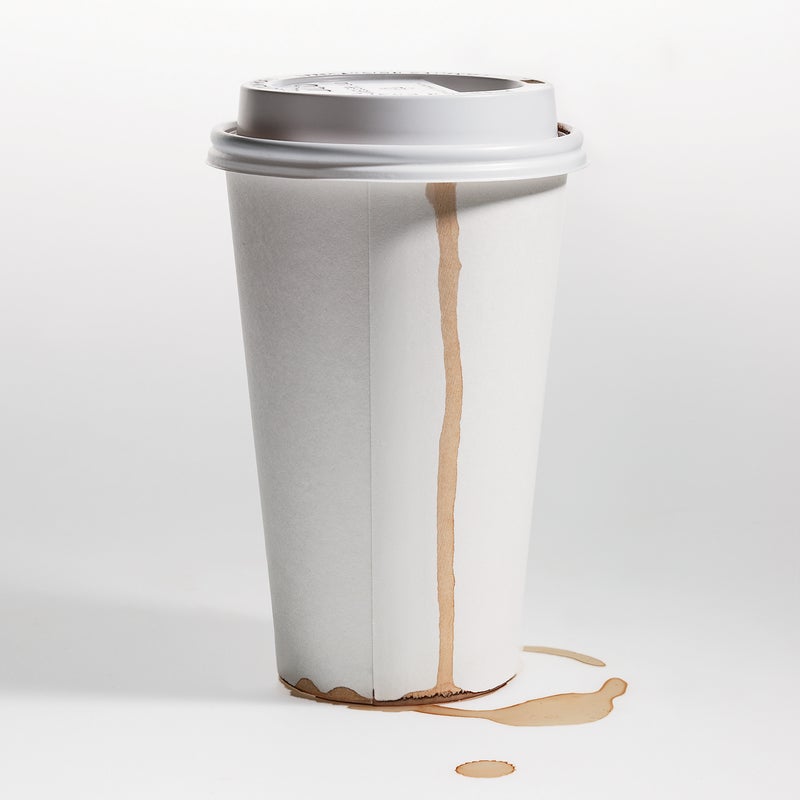
I see many reasons not to quit. The smell, for one. The steam rising off a cup of coffee offers an olfactory promise, the hope that this day may prove more rewarding than the last. While academics have warned for years about the dangers of excessive consumption—caffeine can lead to everything from insomnia and drowsiness to increased blood pressure—the good thing about the scientific community is that its collective opinion constantly changes.
In 2006, Gary Arendash, a University of South Florida professor and researcher at the Florida Alzheimer's Disease Research Center, led a study showing that the consumption of four to six cups of coffee a day may help prevent Alzheimer's and Parkinson's. Arendash, who downs five cups a day, says that pregnant women, children, and those with an unusually high sensitivity to caffeine should limit their intake—but that “everyone else should be safe in that four-to-six-cup range.”
So why, starting tomorrow, will I cut my dosage for five days until I quit entirely? Because I'm up to three or four cups during deadlines. Because 4 p.m. feels increasingly foggy. Because some cry foul on Arendash's findings. “Advising people to consume five cups of coffee daily would be bad advice,” says Jack James, professor of psychology at the National University of Ireland, in Galway, who believes that long-term coffee consumption can lead to increased risk of heart disease.
And because caffeine is addictive. “Pharmacologically, caffeine is a drug,” says Daniel Evatt, a research fellow in the department of psychiatry at Johns Hopkins University. “People can become tolerant, and then they have to use it every day in order to maintain their normal mood level and cognition.” In other words, it's tough to quit when withdrawal symptoms range from splitting headaches to fumbling intellect. And not everyone deals with the world's most popular drug well. A Kentucky man recently killed his wife and blamed his rage on excessive consumption of—you guessed it—caffeine.
- Day 1 (1/2 Cup Decaf, 1/2 Cup Leaded): Last-minute reporting assignment, 6.5-hour drive from Santa Fe to Boulder; iPod malfunctioning; radio dominated by Christian rock; decaf inadequate. There is a bad God.
- Day 3 (1/2 Cup Decaf, 1/2 Cup Leaded): Caffeine is a vasoconstrictor—it inhibits blood flow to the brain. Many experts think that withdrawal headaches are caused by dilating vessels sending more blood to your noggin. “The headaches usually last two or three days,” says Evatt, “but in some cases can last two weeks.” Someone is running knuckles along the inside of my skull.
- Day 5 (One 8-oz Cup of Green Tea, My Last Caffeine for A Month): Experts maintain that green tea contains about half the caffeine of coffee. I maintain that green tea is to coffee what Bud Light is to Wild Turkey.
- Day 7 (Entirely Off Caffeine): The headaches are gone, but I still feel tired by midafternoon. I've been taking online tests measuring my visual response time and decision making twice a day. In the mornings, I can successfully tell the blinking screen that a horse is, in fact, a horse about 95 percent of the time. This afternoon, when I take the decision-making test, I'm right only 85 percent of the time.
- Day 14: Unable to subdue the mildest of hangovers, I decide to take a week off booze.
- Day 17: Three-mile run and six wind sprints before work. The day flies. I decide that exercising before work, rather than after, will become my new standard operating procedure. I ace the cognitive-function test in both the morning and evening. Skeptics might point out that I'm simply becoming more proficient at the online quiz. I am the master of blinking lights!
- Day 21: The stress associated with juggling multiple assignments has relented. Deadlines are met with aplomb. Restraint empowers me. Peppermint tea tastes good.
- Day 31: The day of reckoning comes and goes. I do not order coffee. I do not desire it.
- Day 33: A friend's farm in Vermont. Rain hammers the roof. I do not need the coffee that my friend brews on her old stove. But, life being short, I would like some. I sip, and the rush comes slowly, a sustained soft pulse in my frontal lobe. I open my laptop and take the online cognitive tests. I score my fastest visual-response time yet. “Generically, less is better,” says Evatt. “If you can stick to low levels of caffeine—an eight-ounce cup of coffee a day or less—you can still get positive effects and are less likely to become dependent.” I resolve to limit myself to one cup a day. I resolve not to drink it in the afternoons. I walk out in the rain and make my final resolution: Coffee, my love, I will never stray again.
Make Friends with More People—and Like It
Hypothesis: Social people are happier and live longer
Time Commitment: 30 days
Researcher: Will Palmer
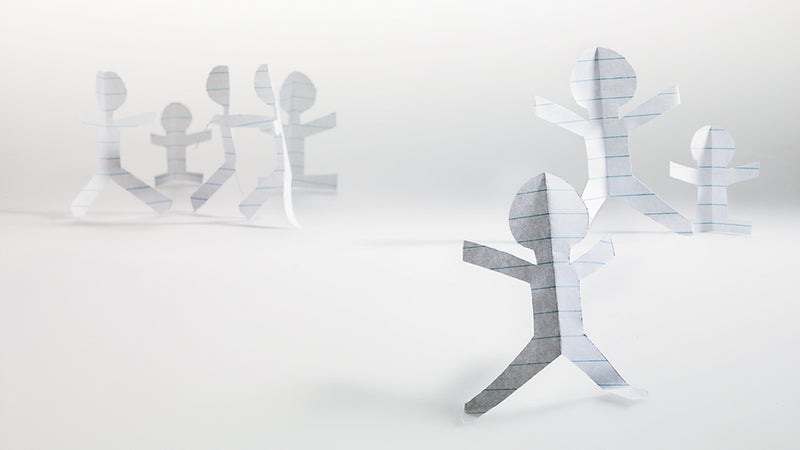
At şÚÁĎłÔąĎÍř, we each have our own office with a heavy pine door. Whether someone's door stays open or closed provides a hint about that staffer's personality. Until last month, I was a closed-door person. This was true of my life in general: I didn't dislike people; I just preferred to keep to myself, maybe because I could control that situation. But after reading , in which he describes the places on earth where people live the longest, I discovered that one of their nine shared traits is a strong social life.
There's an abundant body of science to back this up. In one study, Lisa Berkman, director of the Harvard Center for Population and Development Studies, found that individuals with the least social connectedness were two to three times more likely to die within the nine-year survey period. , a UCSD political science professor and co-author, with , of , found that happiness (like obesity) spreads through a social network, so that even a happy friend of a friend of a friend increases your likelihood of being happy. I got inspired to change.
I called it Operation Social Butterfly. (My girlfriend preferred “30 Days of Liking People.”) My experiment was about keeping the door open, and walking out of it as much as possible for face-to-face interactions. I announced my plan to every person I knew in town, saying: “Invite me out. Make me your last-minute replacement for a concert or movie; just don't make me dance, it won't be pretty.” I vowed to use the phone instead of e-mail, and to stay out after work to see a lecture or get a drink with an acquaintance I'd lost touch with. It took a lot of energy, but once I made it a priority and stopped stressing, I slowly started to feel like I was getting a return on my investment.
I joined the , the local chapter of a movement that promotes community-based modes of exchange (time instead of money), and it gave me a huge sense of being part of my town. I went to my friend Joanne's gallery show, a group of shadow drawings made from light passing through etched Plexiglas, and I realized that the most unassuming people often have the biggest talent. I made new friends at the , which gets city kids active in the backcountry; by going on morning trail runs with a buddy, I saw how conversation lightens the aerobic strain. I successfully avoided tango lessons. I sat in on a wine-tasting luncheon (boring), then later that week delivered food to poor families (a high point).
Buettner, whose book garners lessons from the world's happiest places, told me that “there's an immediate tipping point when people volunteer. Neuroscience shows that the high in the brain that comes from altruism is as strong as it is with cocaine.”
Now I was hooked. I stopped to talk to the homeless guy I used to drive past. His name is Roger, he has a wife, and they needed blankets, so I told him I'd drop some off the next day. I asked the guy who greets folks at the grocery store, Gene, what it's like to spend all day saying hello to people. He told me that his job has more to do with deterring shoplifters, then said he was a simple guy, just hoping he could save enough money to visit his daughter, who's in school back east.
Walking to the car, I thought about my own daughter, who'll be going to college before I know it, and realized that that common link with Gene was why the conversation had made an impact: it gave me a moment of real empathy. Two weeks into my program, I realized I wasn't so different from anyone—my empathy meter was getting stronger, which gave me more confidence being around people and finally changed socializing from work to fun.
By the end of the month, I had no desire to quit the program; instead I disconnected the TV and connected with more humans. I felt more alive, and while I had no scale to measure it on, I could feel the weeks piling onto my life span. Call it wellness or call it happiness—do I daresay awakening?—but I'd never felt so good in my life.
Nap Like You Mean It
Hypothesis: Napping improves mood, memory, and fitness
Time Commitment: 30 days
Researcher: Joe Spring
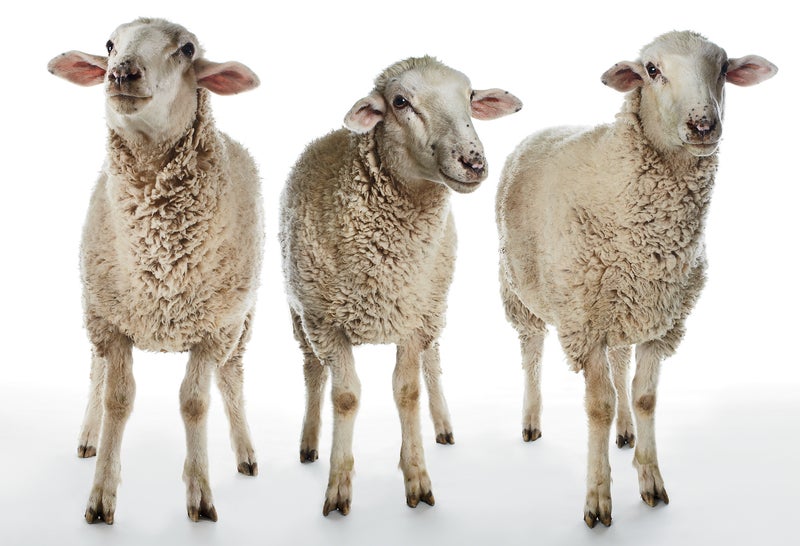

First I got defensive. Strung out? I’m sketched all the time because of stuff I need to do.1 I’m şÚÁĎłÔąĎÍř’s online editor, which means I update our home page, edit blogs, post tweets, and update Facebook, every second of the day.
Then I did the research. Multitasking works like a drug. Scientists say the constant updating and checking2 triggers squirts of dopamine into the brain, causing addiction. It’s the same mechanism that rewarded our ancestors when they constantly looked for lions while running the savannah. Addiction impairs deep thinking,3 increases stress, limits focus, and impairs short-term memory.
I could quote scientific studies on the benefits of napping until you fall asleep. Naps can improve memory and work performance and, over time, reduce the chance of heart disease by 40 percent. The most convincing study pitted midday nappers against afternoon coffee drinkers. The nappers scored better on memory, motor skills, and learning tests. Also, my co-workers were being asked to quit alcohol and caffeine.4 I was asked to sleep, and get paid for it.
I grabbed a mat, a sleeping bag, and a down pillow and threw them in the darkest part of the şÚÁĎłÔąĎÍř basement. I cut daily coffee consumption from three cups to one. I picked 3Ěýp.m., my normal coffee break, to nap. I chose 20 minutes as the duration. Sleep researchers say to rest for 20 to 90 minutes; you want to fall asleep, but not for too long or you’ll end up groggy.
“A 20-minute nap will optimize the time spent in Stage 1 and Stage 2 sleep, which will maximize alpha-wave brain activity,” says Nick Winkelman, the director of performance education at Phoenix-based Athletes’ Performance. “The benefits of alpha waves include relaxation, super-learning, and increased serotonin levels, all of which can recharge the second half of your day, and that includes workouts.”
The first week I didn’t attempt to nap until closer to 4 p.m., and I didn’t fall asleep. Facebook, e-mail, and Twitter did the running man5 all over my hippocampus—the part of the brain that stores fact-based memories. One study found that sleep clears out the hippocampus, like moving files from your desktop to a hard drive, making room for more fact-based memories to be held, saved, and filed away for later. Desperate, I called the father of modern sleep research, 82-year-old William Dement, former chief of the Division of Sleep at Stanford University’s School of Medicine. “If you haven’t been falling asleep, that’s either because you’ve been getting enough sleep or that’s the wrong time,” Dement said. “There’s nothing more wasteful than lying in bed trying to fall asleep.”6
Agreed. I resolved to hit 3Ěýp.m.Ěýinstead. Saturday and Sunday I had no problem napping, but still no dice on weekdays. I even tried listening to Sam Cooke and Etta James. It didn’t work, but I did relax.7
Then I left on a two-week trip to Scotland. I napped on the plane, in cars, and in hotel rooms every day but two. Surrounded by rainy days and whisky, I did fine. I returned home and napped easily over the weekend. At work, I never did sleep for an entire 20 minutes,8 but I grew to like the time-out. Now I’ve cut out the afternoon coffee, take a 20-minute break every day, and have left that setup in the basement, just in case.
NOTES
1. Sample tweet: We vote for Bacon camp. RT Manliest. Summer camps. Alive.
2. I should see if the readers liked my post on The 25 Things Every Guy Should Own.
3. I should respond politely to the reader calling another reader a Nazi on Facebook.
4. Suckers!
5. On Ecstasy—holding neon glow sticks. Facebook wore a red-velour Adidas tracksuit. Twitter wore puffy white feather pants and no shirt. It was really hard to stop concentrating on her.
6. I wonder if Dement uses Facebook and Twitter?
7. I passed full-time Twitter duties to the online intern.
8. I, have a problem. I #love the flood of tasks that make up my job . #hamsterbrain. Click. Ahhhh.
Lose Your Office Chair for Two Legs
Hypothesis: Sitting all day at work may be deadly, even if you exercise regularly
Time Commitment: 30 days
Researcher: Gretchen Reynolds
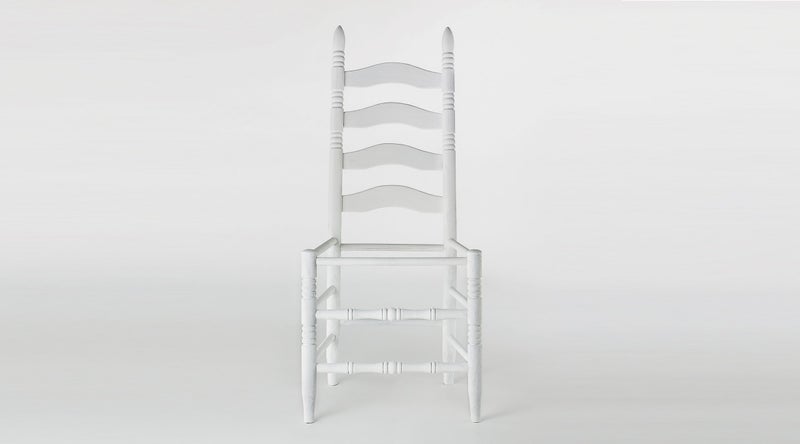
One of the petty but gratifying pleasures of a month spent standing up is that you can look down your nose at the benighted types who spend their days sitting. You loom over them, even if, in other circumstances, they'd top you by a foot. Being morally shallow and rather short, I enjoyed the feeling.
But there are other, more consequential reasons to stand. A growing area of scientific research is teasing out what happens to your body when you park yourself. The findings are disturbing. When, for instance, scientists recently encased lab rats' hind legs in duct tape, they quickly became pre-diabetic—and the effects weren't reversed when the animals later were allowed to move about. Exercise, the researchers concluded, could not undo the biochemical impacts of not moving. Even more sobering, researchers affiliated with the American Cancer Society last year published a study showing that sitting for more than six hours a day contributed significantly to early death, even among people who exercised. A comprehensive 2010 review of studies on sitting concluded that your average “office worker who jogs or bikes to and from work, but who then sits all day at a desk and spends several hours watching TV in the evening” is at high risk of developing the same metabolic changes as seen in the immobilized rats.
I stood up and paced as I finished scanning that report. I haven't sat down much since.
But being a stand-up person in our compromised, modern world isn't easy. Have you noticed how ubiquitous chairs are? And couches? The very essence of politesse nowadays involves inviting someone to sit down. Beginning gently, I bought a wireless headset to use with my office phone, allowing me to pace around my office during phone calls. (You don't realize how tethered you are to your office chair until you untruss yourself.) Then I placed a digital timer on the office windowsill and set it to beep every 30 minutes to remind me to get up and stroll.
Bigger efforts are possible, of course. I looked into standing desks, but they tend to be pricey and small, barely large enough for a laptop. By spreading out my papers on a chest-high shelf, though, I could read and make notes while standing. James Levine, an endocrinologist at the Mayo Clinic and author of “Your Chair: Comfortable But Deadly,” a research paper on sitting, takes the concept one step further. He walks one mile per hour, all day, on a “walking desk.” These contraptions bridge a desktop over a treadmill and come in many different models, from a Ěýto a that arrives with the treadmill attached.
Interestingly, as I detached literally, I found that I grew more connected socially. Commit yourself to regularly flitting and migrating during work hours and you will instinctively hie toward the cubicles of those you find most congenial. Invite them to walk down the hall with you, discussing work as you go. The new science of sitting can be both physically and emotionally uplifting.
Embrace a New Workout Regimen
Hypothesis: Muscle confusion is the way to peak fitness
Time Commitment: 90 days
Researcher: Ryan Krogh
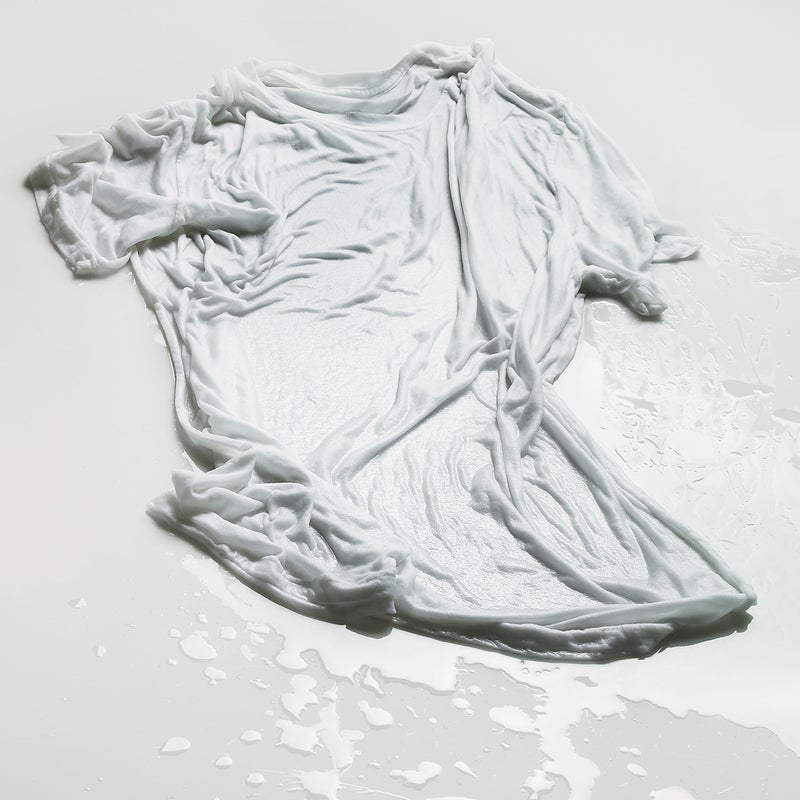
Kelly Slater brings it. So does Barry Zito. Even the Old Spice man dished on Jay Leno about it. The only thing more ubiquitous than the hype surrounding is its snappy catchphrase: Bring It!
The philosophy behind P90X, a home exercise system designed, in part, by celebrity , is muscle confusion—subjecting the body to a variety of exercises designed to prevent it from adapting to a set routine. Give your muscles new challenges and you won't plateau. P90X has 12 DVDs' worth of variety—each day is a new routine roughly an hour long, and the weekly lineup changes every four weeks. When my $120 P90X package arrived in the mail, I felt like I'd been given the training manual for a living-room boot camp.
I didn't exactly Bring It my first week. For starters, I watched the Chest and Back DVD while hunched over a bowl of Froot Loops. But by the end of week one, I was sweating like hell on my living-room floor. The workouts involve, among other basics, heavy doses of push-ups, pull-ups, squats, yoga poses, and core strength moves. It wasn't until week three that I finally managed to match the pace and volume of Horton and his fitness models.
So was it working? “'Muscle confusion' is obviously a marketing term,” says Richard Cotton, national director of certification for the American College of Sports Medicine. “What it really is is exercise variety, and variety certainly makes a difference.” But anyone can add diversity to his training; what P90X provides is structure—and reliable companionship. Despite his penchant for fitness televangelism, Horton grows on you. He's a good, high-energy, digital workout partner. Hit play and he's coming at you with “How many you doing?” and “It's going to burn. It's supposed to!”
I'm in my sixth week—almost halfway through—and I've dropped nearly ten pounds. Somehow I've managed to stick with the program's draconian three-phase nutritional guide, too—heavy doses of fish and vegetables and minimal fats. With the arrival of ski season and a noticeable improvement in both my flexibility and my core strength, I'm determined to keep Bringing It.
Never Tell a Lie
Hypothesis: Being radically honest will improve mental and physical health
Time Commitment: 30 Days
Researcher: Sam Moulton
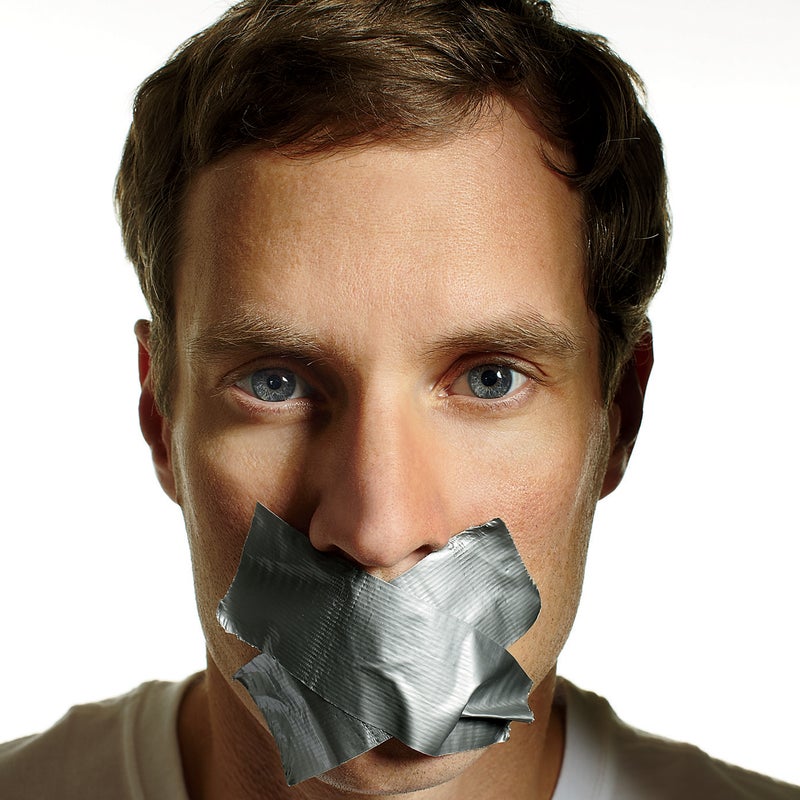
When I inform my wife, Nicole, that I'm going to tell the truth for 30 days, she's quick to reply. “How's that going to be different than you normally are?” While I'm often candid with Nicole, I hit the people-pleasing trifecta: I'm a Cancer, a middle child, and a Midwesterner. I hate conflict. In other words, I lie more than most. (And most people lie all the time: in one study, 60 percent of the participants lied two to three times during a ten-minute conversation.) But I had no idea how often I lied until I read .
, a Virginia-based psychoÂtherapist and the author and founder of the Radical Honesty movement, espouses a simple idea: we'd all be happier if we told the truth. About everything, from serious emotional issues, like whether you've been faithful to your spouse, to more mundane matters, like whether you like your co-worker's new haircut. Although there are no conclusive scientific studies to back it up, Blanton believes that lying is the primary cause of most psychological and physical illness, including anxiety, depression, ulcers, insomnia, skin rashes, and high blood pressure. He doesn't recommend you tell the truth 100 percent of the time (“especially when talking to a cop or a lawyer”), but he firmly believes that, in the long run, we'd all be better off, both personally and as a society, if we cut the superficial bullshit and spoke our minds.
At first, I'm fired up to circumvent my filter. I write RADICAL in big block letters on one sticky note, HONESTY on another, and stick 'em both on my computer. I pull my notes out from the book: “Be descriptive and precise.” Use phrases like “I resent you for …” or “I appreciate you for …” A few days later, a writer sends me a disingenuous e-mail. I look at the stickies and start hammering out a hot one. But then I begin thinking about the consequences. We're old friends. He might be an editor at a magazine in the future; I might need work. I delete the e-mail.
When I tell the editor of this story about my lack of courage, she calls me a wimp. I expect the same from Blanton, but he's surprisingly gentle. “Talking in person is always preferable,” he says. “You should have kept the e-mail, taken it with you next time you were going to see him, and let him read it while you're sitting there.”
I do have some successes, though. During a face-to-face meeting, a co-worker asks for some feedback. I swallow hard and tell him what I think his strengths and weaknesses are. He's not pissed with my frank assessment; he appreciates my honesty. We proceed to have a really open and productive conversation about work. Emboldened, I proceed to burst the bubble of an earnest ski mountaineer who tries to sell me on her upcoming expedition. I tell her exactly why her pitch is lame, but then “stick with her,” as Blanton says, and give her some specific ideas about how to make it better. Ultimately she thanks me for being so candid. It feels good.
A few nights later, Nicole asks for some feedback on a photography assignment she's been working on all evening. It's late. I'm getting ready for bed. I know what I should do. While she does value and want my honest feedback, she doesn't want it right now. Now she needs some kind words and support.
But I've been thinking about radical honesty, how I need to stop being so spineless. So I let her have it. “I'm just being honest,” I stammer, reminding her about my project. Sensing that it's going badly, I tell her I'm tired and I want to go to bed. This is also the truth, and also unwise. She starts crying. I feel like a jerk. A few minutes later, I apologize and officially make up my mind: sometimes telling the truth is a terrible idea.
5 Honesty Tips from Psychotherapist Brad BlantonĚý
- Keep Track: Note how often you bite your tongue, sugarcoat a reply, or flat- out tell a lie, white or otherwise. You’ll realize, Blanton says,Ěý“how much of your life is like a superficial sitcom.”
- Make a Pact: Tell the truth with just one per- son, like your spouse, as opposed to going all in with everybody.
- “Stay with People”: Your honesty will offend some. “Stick with them,”Ěýsays Blanton,Ěý“You’ll be surprised how quickly people can move on.”
- Adress Problems in Real Time: It’s sometimes easier to forgive lies that are several days (or years) old, but doing so, says Blanton, creates unintimate relationships.
- Skip Blanton's Kookiest Bits: While much of what he advises makes sense, he can be rabid, like when he encourages you to tell your wife that you occasionally fantasize about her sister.



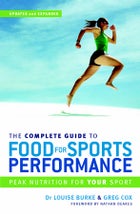 Knowing the
Knowing the  A simple
A simple